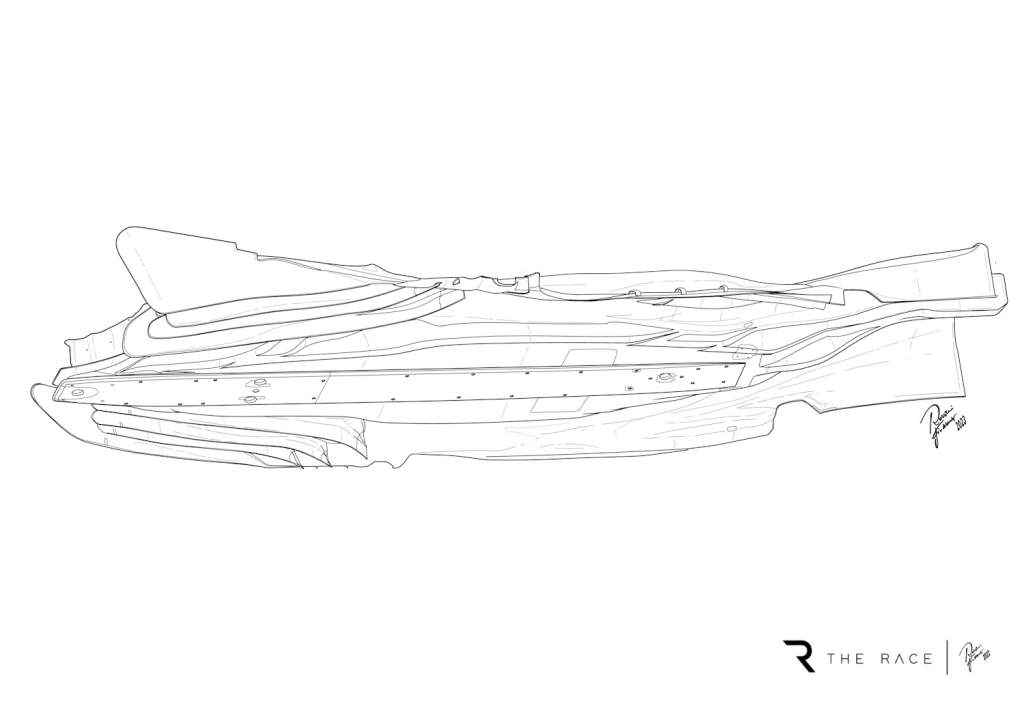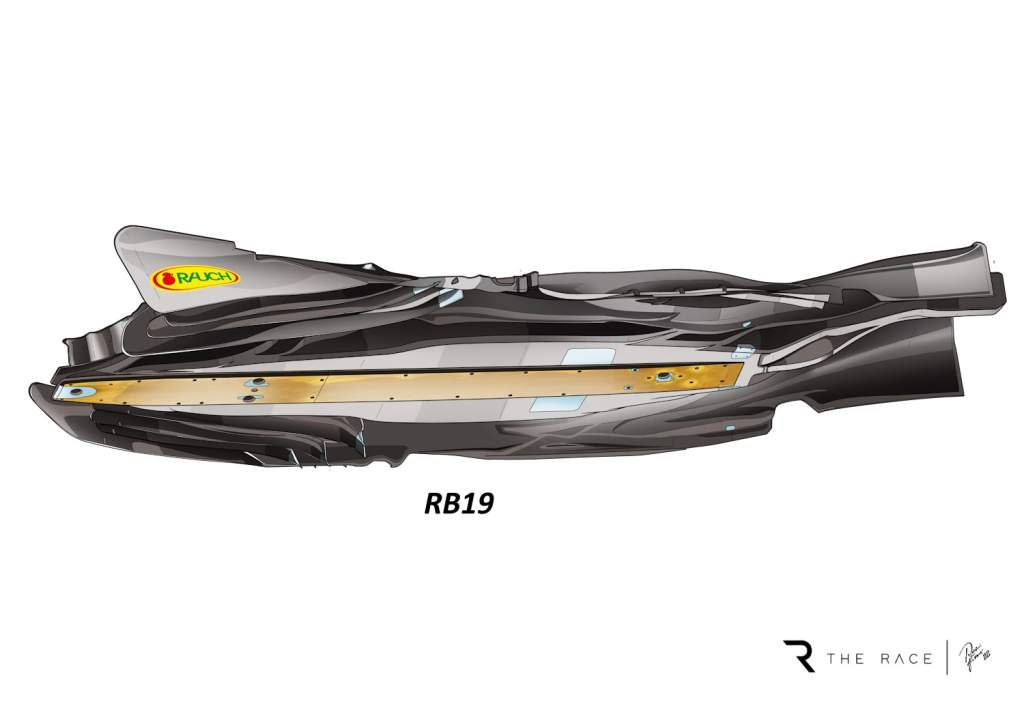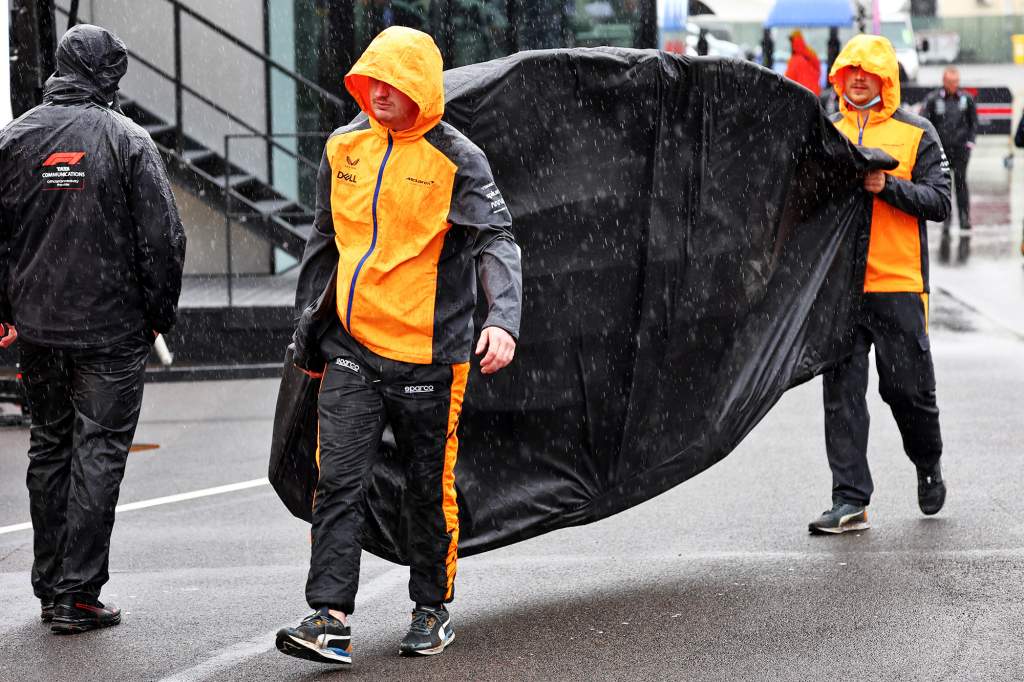Up Next

The glimpse of the underfloor of the Red Bull RB19 afforded by Sergio Perez’s Q1 crash at Ste Devote in Monaco has been a big Formula 1 talking point since, both in the wider world and doubtless in the design offices of rival teams.
The challenge is how long will it take for others to copy it, but there is an even bigger question teams need to answer if they are ever to aspire to get on terms with Red Bull.

Certainly, the other nine teams will all be working to learn what they can from the details of a Red Bull floor that is best described as topographically complex. That there is so much detail makes that difficult given the flattening effect of the photography, but even if you could accurately reproduce the detail the key is understanding it. As Red Bull chief engineer Paul Monaghan puts it, “an ignorant copy isn’t necessarily going to go faster, it has to integrate”.
There is an even more fundamental question, which is how to get to the level of understanding where you could generate such complexity yourself. Copying is one thing, but achieving Red Bull’s level of knowledge is another. That challenge is explained well by Dave Robson, head of vehicle performance at a Williams team that is lagging furthest behind in terms of aerodynamics.
While Robson is an engineer rather than an aerodynamicist, in his position he has a clear perspective on what the Red Bull floor detail really means for teams aspiring to catch the champion.
“It’s fascinating, definitely,” said Robson when asked about the glimpse of the Red Bull floor. “How valuable it is is a little bit harder to say.
“There’s very little on an F1 car aerodynamically that you can just copy. You have to understand what it’s doing and make it work for your car, or understand all the other parts that go with it. And that floor is a great example of that, it’s just a whole new level.

“You’ve somehow got to pick it apart. It is genuinely difficult to understand how all those curves work in three-dimensional space, it’s that complicated.
“What’s more telling is trying to understand. There are a few bits where you can see what they’re doing geometrically, so you can mock something up and test it and try and understand what it is they’re trying to achieve and then use it in your own car. So that’s clear and everyone will be doing that.
“The bigger question is how did they arrive at that in the first place? What is their process that gets to that level of complexity? It’s like a completely different paradigm.
“That’s probably the more interesting question to answer rather than what’s it actually doing right now. How did they get there? And what does it mean the next one’s going to look like?”
Williams is hardly the most relevant team right now in terms of chasing down Red Bull, but Robson’s point holds true for all teams. The greatest value of the Red Bull floor is in signposting where you need to get to in terms of understanding, tools and ideas to produce such designs.

With ground-effect floors, it’s easy to over-simplify the concept. The venturi effect they rely on is straightforward enough in its most basic form in terms of compressing and expanding the airflow. What the Red Bull floor illustrates is that the underfloor is a network of interacting airflows – ones that are also impacted by the airflow above it.
All teams are well aware of that. But to gain the fine control needed to produce so elaborate a floor, something that appears to have played a key part in Red Bull producing prodigious downforce without, last year particularly, hitting porpoising problems, requires formidable understanding.
Monaghan suggests it might not be until the Japanese Grand Prix in late September that a rival might be able to produce a floor that builds on the lessons learned from a glimpse of the secrets of the RB19 in Monaco in May. By September, of course, Red Bull will have moved on. Even if a rival could copy it, that lag means it will still be playing catch up.
“There’s a phase lag between people seeing it, getting it on their car and actually going faster with it. An ignorant copy isn’t necessarily going to go faster, it has to integrate,” said Monaghan.
“And it’s not just a bit of floor geometry. It’s certainly sensitive on these cars so our one was seen, the Mercedes are seen. But don’t forget, people carry floors in and out of garages, people lift the front of the cars up so it’s not as if it was the first time [it was seen].

“Our development path is reasonably well laid out in terms of the timings we wish to try and deploy things, if they’re going to make us go faster. If we change someone else’s development plan, then we probably increased the phase lag by which they can get into the car. So let’s have a chat around about Japan time, and we’ll see where everybody is.
“We’ve got to maintain our discipline and our development path. And it’s only our car that we can change the speed of, we can’t influence what those guys do. So we’ll keep plugging away in our own manner and we’ll try to be quickest.”
The true benefit for rivals will not be in replication, but in finding ways to evolve their knowledge of the underlying science required to produce such designs independently.
Given Red Bull’s supremacy, that’s a big challenge even for those in the upper echelons of the grid, let alone Williams.
“I’m not an aerodynamicist, but it looks pretty daunting to me,” said Robson. “I suppose at the same time, as an engineering problem, it’s quite exciting to try and understand what it’s doing and how they got there. But it’s not easy.”




